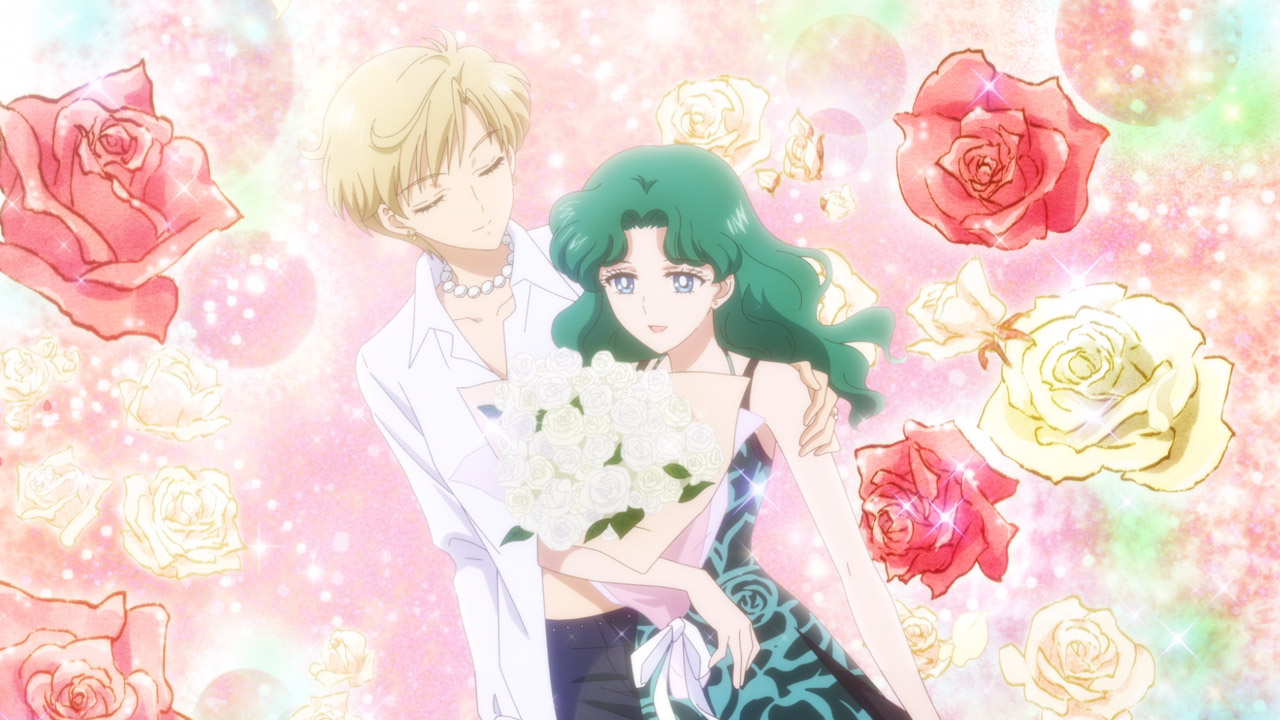There is a moment in Sailor Moon Eternal where Chibusa (Sailor Chibi Moon) wishes to be an adult while her mother Usagi (Sailor Moon) jests it must be nice being a spoiled child. Chibiusa insists she wants to be an adult so Mamoru (Tuxedo Mask) will look at her as a woman. If you are confused at this point, you will need to watch Sailor Moon Crystal to understand the nuances of the story. Eternal is here to give a condensed adaptation of the Dream arc of Naoko Takeuchi’s renowned Sailor Moon manga or as some veteran Sailor Moon fans remember as Sailor Moon SuperS. On that level, Eternal succeeds in condensing SuperS into two films while giving Sailor Moon a fresh visual update.

Sailor Moon was the first magical girl show to incorporate Super Sentai (adapted as Power Rangers in the US) elements into its story. It has the kind of uncomplicated heroism that fits nicely with the fantastical setting in the present day. The lore of Sailor Moon is substantial - the first anime series spanned 5 seasons across 200 episodes alone. The manga had 60 chapters that were serialized from 1991 to 1997. So aside from reading the manga, watching either the original Sailor Moon anime, or watching Sailor Moon Crystal, newcomers need to understand a few things as Eternal is not an optimal entry point. First, the Sailor Guardians are reincarnations of warriors from the Moon. In the 30th Century, Usagi and Mamoru become the King and Queen of Earth presiding over a kingdom where people are essentially immortal. Chibiusa is their child and heir to their kingdom. As for that age gap between Usagi and Mamoru, it's a reincarnation romance as in their past lives, Mamoru was a prince from Earth who fell in love with Usagi, a princess from the Moon. The original anime adaptation has Mamoru start off as a college student and Usagi as a middle schooler, but Crystal narrows their age gap by having Mamoru start off as a high school student.

Of secondary concern is the relationship between Haruka (Sailor Uranus) and Michiru (Sailor Neptune). In the 1990s, the American broadcast adaptation was infamous for making gender swaps and erasing any overt signs of homosexuality. Here Haruka and Michiru are a lesbian couple instead of being ‘cousins.’ It's the 21st Century and times have since caught up. As for their family setup, Hotaru (Sailor Saturn) was reborn at the end of Crystal and Haruka, Michiru, and Setsuna (Sailor Pluto) became the guardians of Hotaru as an adoptive family. This is why Hotaru refers to both Michiru and Setsuna as Mom and Haruka as Dad. Knowing these few things will help newcomers understand key relationships that the film breezes over. This is not a criticism of Eternal, as trying to compress all this information at the start would have been nearly impossible. Information is doled out as the movie progresses, but ultimately the film assumes that most viewers are already Sailor Moon fans with a working knowledge of the previous iterations or at the very least with Crystal.
In line with Crystal, Eternal hews closer to the Sailor Moon manga. The filler episodes from SuperS are cut, which affects some of the character development as a result. The spirit of the arc is intact regarding the dreams and aspirations of the Sailor Guardians. Chibiusa is a particular beneficiary from her new portrayal in Eternal as she is less of a brat than her SuperS incarnation. Fundamentally Eternal is not about a journey, but rather the culmination of one for the Sailor Guardians as a whole. Usagi and Mamoru finally arrive at their coronation as King and Queen in Eternal when Mamoru gets his own staff of rulership. The pacing is brisk, the film doesn’t drag in places, and overall the direction is tight and it hits all the key story points. The theme of dreaming big and being ambitious will probably resonate more with a younger audience.

Sailor Moon Eternal works as a bookend to Sailor Moon Crystal, though it remains to be seen if Sailor Stars will get a reboot as well. Considering that Stars was essentially buried in the US market for nearly two decades due to its perceived trans themes, this may be a bridge too far for publishers. For Usagi, her journey from clumsy cry-baby to monarch concludes on a high note. Mamoru has long struggled as a ‘useless’ character, part of it was by design by Naoko Takeuchi who wanted a boy-in-distress, but here he isn’t completely useless and he does address how much of a burden he is. Chibiusa arguably has the most development as she starts to step out of Usagi’s shadow by not only finding a viable love interest but also getting a glimpse of her future self and future allies.
If you are in the mood for some simple heroics and a crisp delivery, you won’t be disappointed. Sailor Moon fans will be delighted that they have largely worked out the animation and pacing issues that plagued the early episodes of Crystal. Eternal is not pushing any technological envelopes, but it does use care when it comes to the transformations and attack sequences. Newcomers to the franchise will benefit from a crash course of the original Sailor Moon anime or watching Sailor Moon Crystal, if they want to avoid confusion. Hopefully, they will enjoy this crash course and will become fans as well. It’s a venerable franchise that has had numerous iterations over the years, its message still resonates with numerous spiritual successors that have helped form a mainstay genre within anime.
Pretty Guardian Sailor Moon Eternal The Movie (Parts I & II) will be available for streaming in multiple markets on Netflix on June 3, 2021.
https://www.netflix.com/title/81214399


